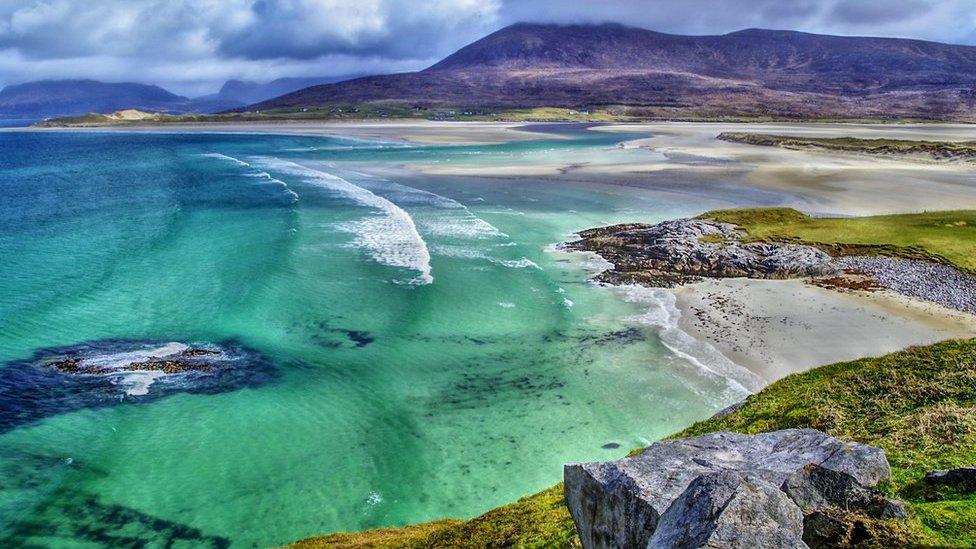'Revival' of Scottish islands populations
- Published

Parts of Harris have seen population growth
Scottish island populations are showing signs of increasing after years of decline, according to researchers and community groups.
The James Hutton Institute, Scotland's Rural College, Community Development Lens and Community Land Scotland have been gathering evidence of growth.
Their examples include populations in Colonsay and west Harris.
The organisations said young people choosing to stay or return to island communities was a factor.
They have issued a joint statement, called the Islands Revival Declaration, to highlight "green shoots" of population growth.
The groups said the rises had still to show up in official statistics, such as the Census.
Community Land Scotland's policy director, Dr Calum MacLeod, said: "The Islands Revival Declaration rightly highlights local control of land and marine assets as a key driver of positive population change in some island areas.
"The challenge now is to ensure that public policy maximises opportunities for more of that local control to be exercised through community ownership and other means to enable the continuing sustainability of all our islands communities."
Colonsay has seen "modest increases" with 106 people in 1991, 113 in 2001 and 132 in 2011, according to Census figures.
The groups said they expected the upward trend to continue into 2021.
In Harris, work by the West Harris Trust community group, which includes building affordable homes, has been credited with increasing the population in that part of the island from 119 in 2012 to 151 in 2019.
The trust has set a target of reaching a population of 170 by 2020.